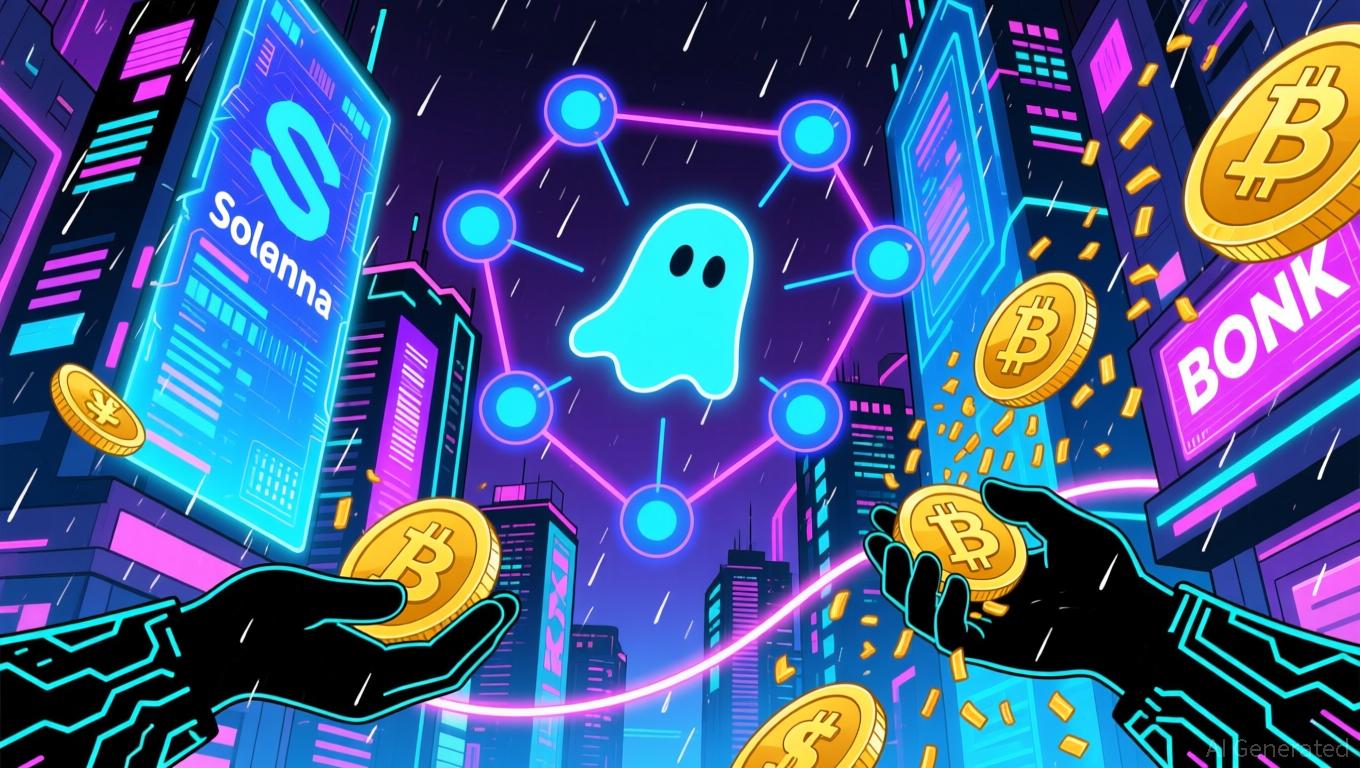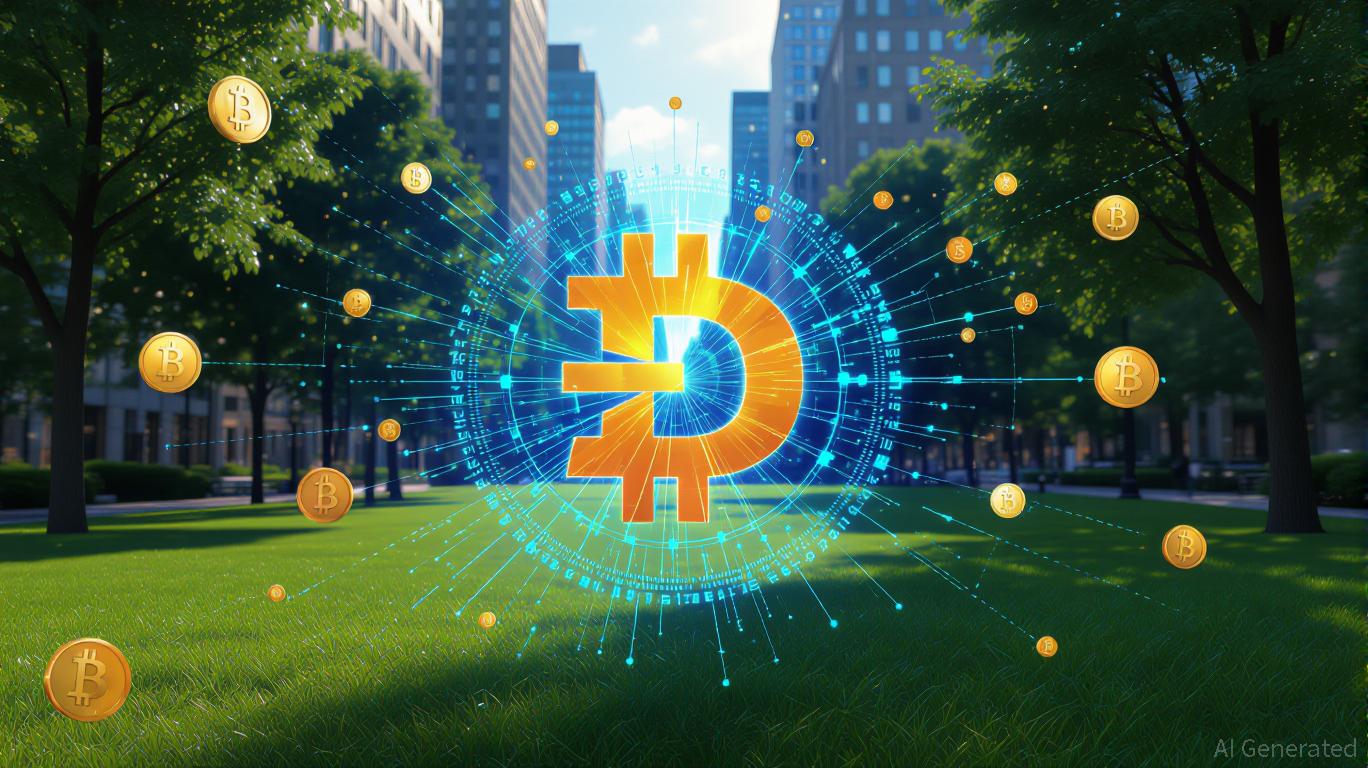XRP News Today: IMF Cautions That Rapid Tokenized Markets Could Intensify Crashes in the Absence of Regulation
- IMF warned tokenized markets like XRP could worsen flash crashes without regulation, citing risks from decentralized systems lacking traditional safeguards. - Report acknowledged tokenization's potential to cut cross-border payment costs but highlighted volatility risks from rapid liquidity loss seen in crypto markets. - SEC's approval of crypto ETFs signals growing institutional acceptance, though regulators emphasize oversight frameworks to mitigate systemic risks. - IMF proposed a global digital marke
IMF Raises Concerns Over Unregulated Tokenized Markets
The International Monetary Fund (IMF) has cautioned that while tokenized financial systems hold promise for improving cross-border payments, they could also intensify the risk of sudden market crashes if left without proper oversight. In its March 2023 report, "Fintech Note, Trust Bridges and Money Flows: A Digital Marketplace to Improve Cross-Border Payments," the IMF recognized the advantages of technologies such as XRP in making global transactions more efficient. However, the organization stressed that these innovations also introduce significant systemic risks.
According to the IMF, tokenized currencies like XRP can facilitate quicker and more affordable international transfers by eliminating the need for traditional credit-based arrangements. Yet, the lack of centralized regulation could make these markets more susceptible to extreme price fluctuations, especially during periods of instability.
Balancing Innovation and Financial Stability
The IMF's findings highlight a fundamental challenge in digital finance: fostering technological progress while maintaining market stability. Traditional cross-border payments depend on trusted relationships between banks, which often result in high fees and slow transactions. Tokenization offers a way to transfer ownership instantly on shared digital ledgers, but the IMF warns that these systems do not provide the same protections as established banking networks. For example, central bank swap lines—used to stabilize markets during crises—rely on political cooperation and trust, features that tokenized systems may not be able to replicate. This absence of safeguards could lead to more severe flash crashes, similar to those observed in cryptocurrency markets where liquidity can quickly disappear.

Regulatory Responses and Market Developments
Regulatory bodies are beginning to address these emerging risks. The U.S. Securities and Exchange Commission (SEC) has started approving or reviewing several exchange-traded funds (ETFs) linked to cryptocurrencies, signaling a gradual move toward mainstream acceptance. For instance, Grayscale Investments recently introduced the first U.S. spot Dogecoin (DOGE) ETF, though its initial trading volume was modest at $1.41 million. Meanwhile, applications for Chainlink (LINK) spot ETFs from Bitwise and Grayscale indicate that regulators are cautiously allowing tokenized assets into traditional markets, but with a strong emphasis on regulatory oversight. These actions reflect a broader effort to integrate digital assets into established financial systems while managing associated risks.
A Vision for a Global Digital Marketplace
To address these challenges, the IMF has proposed the creation of a global digital marketplace for tokenized money. This platform would enable assets like XRP to be exchanged internationally with greater efficiency, supported by market makers who would handle currency conversions and liquidity. The IMF does not endorse any specific token, instead presenting XRP, Stellar, and Bitcoin’s Lightning Network as examples of possible settlement mechanisms. This approach underscores the need for standardized governance and coordinated regulation to avoid fragmentation and systemic weaknesses.
Macroeconomic Influences and Future Outlook
Broader economic trends are also shaping the future of tokenized markets. For example, speculation about a potential interest rate cut by the Federal Reserve in December has already caused notable volatility in the cryptocurrency sector, with Bitcoin recovering after a sharp decline. These developments demonstrate how shifts in monetary policy can interact with digital asset markets, potentially amplifying risks if regulatory measures are insufficient. The IMF’s warning serves as a reminder that as governments and institutions become more involved with tokenized assets, the interplay between policy, market structure, and regulation will be crucial in ensuring the stability of next-generation payment systems.
Disclaimer: The content of this article solely reflects the author's opinion and does not represent the platform in any capacity. This article is not intended to serve as a reference for making investment decisions.
You may also like
Bitcoin Updates: SGX Addresses Offshore Perp Shortfall as Bitcoin Decline Increases Demand for Hedging
- SGX launched Bitcoin and Ethereum perpetual futures, becoming a first-mover in regulated onshore crypto derivatives to meet institutional demand. - The $187B/year perp market, dominated by Asia, now gains a regulated alternative to offshore platforms with SGX's 22.5-hour trading window. - Perps enable hedging during Bitcoin's 2025 downturn, with SGX's margin-call system prioritizing investor protection over instant liquidations. - Regulatory caution limits access to accredited investors, aligning with gl

Bitcoin News Update: Institutional ETF Adjustments Challenge Key Bitcoin Support Thresholds
- Analysts warn Bitcoin faces 25% drop risk if key support levels fail amid shifting institutional ETF dynamics. - Texas's $5M IBIT purchase highlights growing government interest, but ETFs fall short of direct BTC ownership criteria. - Technical analysis shows Bitcoin trapped in a broadening wedge pattern, with breakdown below $80,000 risking $53k decline. - Institutional rebalancing sees $66M IBIT outflows vs. $171M FBTC inflows, signaling tactical ETF rotation over accumulation. - Abu Dhabi's $238M ETF

Bitcoin News Update: Meme Coins’ Path to Widespread Adoption Depends on ETFs and Clear Regulations
- Meme coins show renewed interest in 2025 as Bitcoin surges toward $90,000 and institutional investors reengage, driven by ETF/ETP launches blurring crypto-mainstream finance lines. - Solana-based BONK and privacy-focused GhostwareOS (GHOST) innovate with ETPs and modular privacy tools, attracting investors through novel value propositions. - Asian market volatility, including South Korea's Upbit hack, and Cardano's declining metrics highlight meme coins' fragility despite short-term technical optimism. -

DASH Soars 150% in a Week: Exploring the Drivers of DeFi's Comeback at the End of 2025
- DASH's 150% price surge in 7 days (late 2025) highlights DeFi's resurgence driven by institutional adoption, tech innovation, and macroeconomic factors. - Institutional liquidity via hybrid platforms like Aster DEX boosted DASH's $27.7B daily volume, attracting investors amid traditional market volatility. - Dash Platform 2.0's scalable infrastructure and privacy features strengthened its appeal as DeFi prioritizes interoperability and self-sovereignty. - Privacy-focused protocols like DASH gain traction
